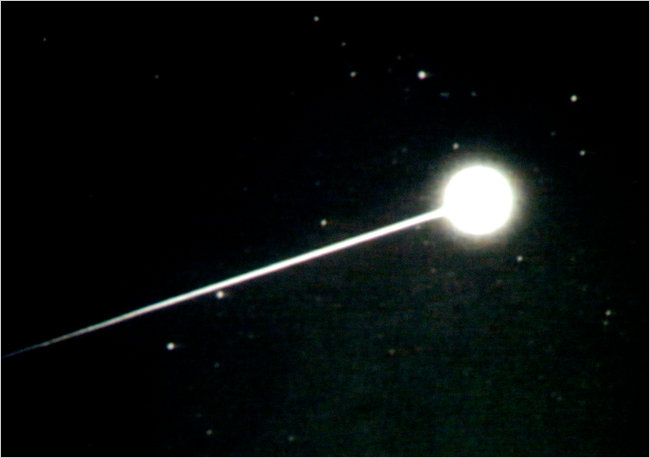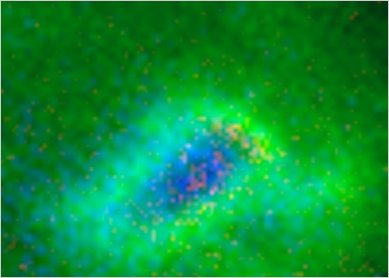
Dr. Westphal reported the first speck in March, and he described the second and third on Friday at a meeting of the Meteoritical Society in Manhattan. Each speck is about one-25,000th of an inch across.
The third is particularly intriguing. It is rich in carbon, raising the possibility that it is full of the molecules that could serve as the building blocks for life.
The Stardust's primary mission was to bring back bits of a comet that it passed in 2004, but scientists also hoped that it would also trap some interstellar particles within a wispy concoction known as aerogel that served as a cosmic dust collector.
The spacecraft completed its seven-year ride through the solar system in 2006 and, as it swung past Earth, detached a capsule containing the collected particles, which parachuted down.
Then - with help from an army of amateur researchers - scientists began the painstaking process of distinguishing the interstellar specks from ordinary solar-system dust.
Like a car in a snowstorm, the solar system is flying through a cloud of interstellar gas at 55,000 miles an hour, so stardust enters from one particular direction. By analyzing the directions from which particles strike the aerogel, scientists can determine which ones are from the interstellar cloud.

Instead - "totally out of desperation," he said - the scientists turned to non-experts around the world to sift through thousands of images. Today, about 29,000 people - or "dusters," as they call themselves - take part in the Stardust@Home project, which Dr. Westphal directs.
Interspersed test images allow the researchers to check how well the dusters are doing, and the dusters compete for the top scores.
The first presumed interstellar particle - actually two distinct pieces - was found by a Canadian duster, Bruce Hudson, who retired as a carpenter and groundskeeper after a stroke. Mr. Hudson said he had looked through 25,000 images, spending as much as 5 to 10 hours a day at it.
"You get so caught up in it," he said. He named the two pieces Orion and Sirius.
The second was discovered by Naomi Wordsworth, a circuit designer in England, who heard about Stardust@Home from a BBC television program.
"I thought it was a wonderful opportunity for anyone to become involved with real space research and I joined straight away," Mrs. Wordsworth said. "Although I spend my working days in front of a computer solving problems and verifying designs, I found it was quite relaxing to look through the photos and concentrate on the visual images."
She named her speck Hylabrook, after the name of her parents' house.
The researchers have yet to check their database to identify the person who turned up the carbon-rich third particle, which turned up only two weeks ago.
So far, the scientists have a rough breakdown of the chemical elements in the dust specks, based on X-ray imaging, but they do not know much else.
"We are deliberately not doing as much analysis as we could," Dr. Westphal said. "Our great-grandchildren would curse us if we ruin these things. We're immensely aware if we drop one on the floor, it would cost $300 million" - roughly the cost of the Stardust mission - "to get another."
They still cannot say for certain that the three are interstellar particles. To do that, they would have to risk extracting the bits from the aerogel and analyze the oxygen isotopes.
For reasons not understood, the solar system has a higher percentage of oxygen-18 relative to oxygen-17. If the particles are indeed from beyond the solar system, their oxygen isotopes would contain the lower amounts seen elsewhere.



Reader Comments
to our Newsletter